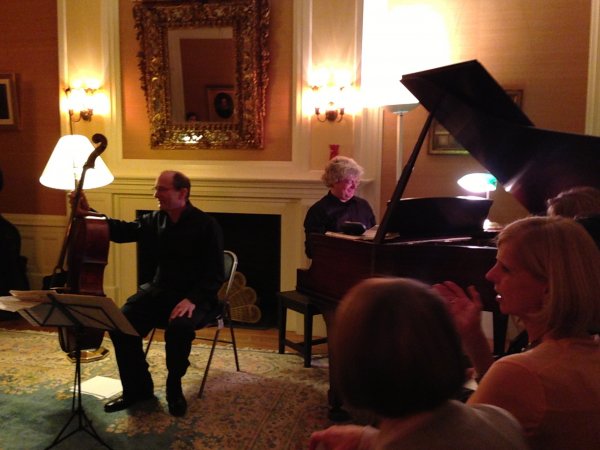theofile: fantastic post.
Now certainly important or vital aspects of an instrument can be lost when recording (recording is a lossy affair) and therefore the persons at the wheel try to capture the event in such a way, that when played back through the target systems of the day, they convey the elements most important to them. Part of this loop can involve the distortions that a typical system brings to the equation. This can be as simple as frequency response. For example, if most systems of the day had a huge mid-bass hump then engineers may present the final mix as lean so that it doesn't sound muddy on the typical system. You play this back on a system with a fairly flat frequency response and it doesn't have the power or slam that was intended by the artist(s).
I think it gets trickier with digital (which imo is much more lossy than analog). If one has a system that is squeaky clean and honest, the 'cracks' are revealed and it will really depend on the recording/mastering as to whether something will sound correct on many systems.
MadFloyd and theofile,
Two nice posts. Thanks also to Al M. for reviving this most interesting thread. theofile asks an interesting question. I would answer by writing YES, there is an approach to system building that gets us closer to presenting the recordings as they are. But somewhere earlier in this excellent post is a reference to the Gold Standard and trying to reproduce what unamplified instruments actually sound like. High fidelity to the recording and music sounding real are not the same thing.
So, my interest, and what I am trying to learn, is slightly different from what theofile asks. I agree that there are two approaches: pleasurable sound or high fidelity to the recording. I have been thinking more about this ever since the suggestion to directly compare MadFloyd's analog to digital sources came up. One can compare the two sources to determine which one is personally more pleasurable. Whether that is also which one is "better" or which one more accurately portrays what is on the recording is a different matter.
"Better" may mean, "I prefer it". Or "better" may mean it is more faithful to the recording, or "better" may mean it sounds more like real instruments. Mixed up in all of this are two other direct comparisons that have been discussed recently. Is the digital recording of the LP indistinguishable from the LP itself, AND, does the LP or the digital file more closely resemble the mic feed?
So, as I see it, there are three comparisons which need to be made, and the results will get us closer to the question which theofile asks at the end.
1. How do the LP and digital file of the same recording compare to the original master from which the recording was made? And does it make a difference if the original master is analog tape or digital file?
2. Is a digital file of an LP needle drop indistinguishable from the LP itself?
3. Does a 45 RPM Direct to Disk LP or a quad DSD (or other digital format) sound closer to the direct mic feed or the actual musician playing the instrument?
We assume that if the technology makes a perfect copy of something, that it is transparent. However, transparency does not guarantee that it sounds real. I don't think we yet understand everything we need to know to make an audio system sound real. Is this not obvious from the point that theofile made regarding the fifty or so different takes on real sound.
Another side discussion is whether or not there actually is "an absolute sound". I have heard specific instruments and halls all sound different depending on many, many conditions. Which is correct? Al M. has written about, and I have discussed with him, the notion that there is no absolute sound. There is instead a range of sounds from any given instrument in a give hall, and if a system can reproduce the sound within this band, then that system can sound convincing, believable, natural, or what have you. This is the sound that we have all heard live, and we know that range when we hear it. It is our reference and what convinces us of the success of a system. Reproducing a sound within that range, which can vary considerably, is the actual goal, in my view.
Also interesting is MadFloyd's comment above that digital is a lossy recording technique. This was once assumed, but has recently been forgotten or is thought to have been corrected with the latest digital technology. Ian has been living with quad DSD and listening to it for a while now. And he seems to find it lacking in certain ways that analog is not. I happen to also think that both digital and analog are lossy, and they each lose different aspects of the sound. It is complicated and I'm sure controversial, but understanding this and how to improve it are critical to being able to reproduce music which is convincing.
So, back to theofile's question: Is there an approach to system building that gets us closer to presenting the recordings as they are? Yes, there is, and it is different for all of us. But I am increasingly convinced, that this is not necessarily the approach to getting our systems to sound more like real instruments? For that, I think that we have to answer the three questions I ask above and see where that takes us.

















